Just the mention of the Mediterranean conjures up images of crystal-clear waters, sun-drenched beaches, and charming coastal towns. But when it comes to choosing between the alluring shores of Italy and Spain, well, that’s where things get REALLY interesting!
These two European powerhouses are renowned for their spectacular coastlines, each offering a unique blend of natural beauty, rich history, and mouthwatering cuisine.
But how do they stack up against each other? Which country boasts the most captivating beaches, the most picturesque seaside villages, or the most unforgettable coastal experiences?
Ahead we take a deep dive into the stunning shores of Italy and Spain, comparing everything from their world-famous beach destinations to hidden coastal gems. We’ll explore the cultural nuances, the gastronomic delights, and the breathtaking landscapes that make each country’s coastline truly one-of-a-kind.
Whether you’re a beach bum, a history buff, or a foodie looking for your next seaside feast, we’ll help you decide which coastal paradise is calling your name.
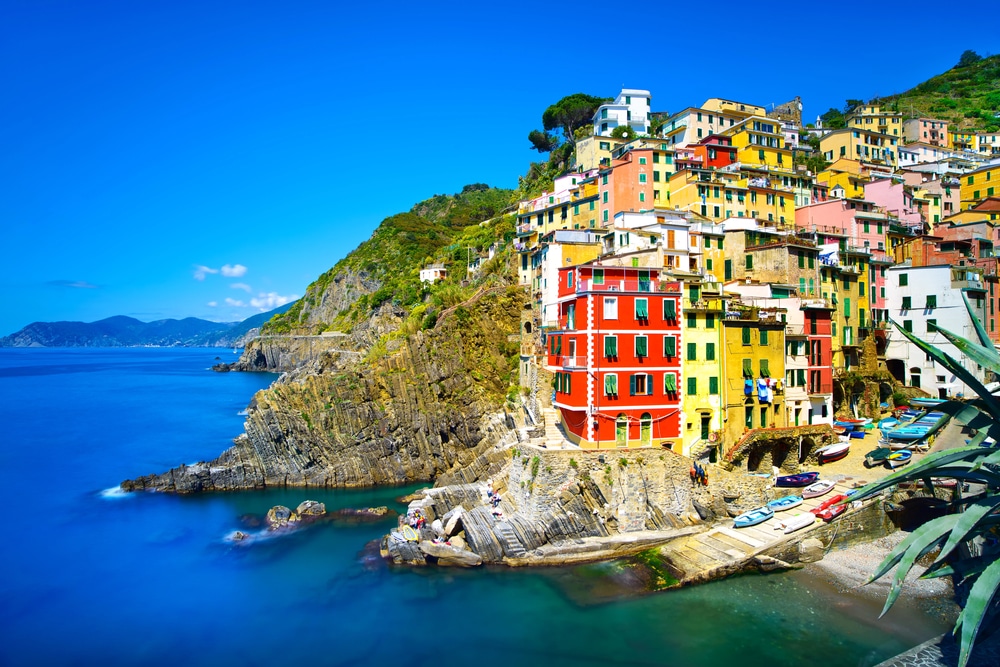
The Italian Riviera
Cinque Terre
Let’s kick things off with a true Italian showstopper – the Cinque Terre! This string of five colorful fishing villages perched on the rugged Ligurian coast is nothing short of magical. Each town – Monterosso al Mare, Vernazza, Corniglia, Manarola, and Riomaggiore – has its own unique charm and character.
Filled with pastel-hued houses tumbling down cliff sides, narrow winding streets filled with the aroma of fresh pesto (a local specialty!), and stunning hiking trails offering breathtaking views of the sparkling Mediterranean. It’s no wonder the Cinque Terre is a UNESCO World Heritage site!
While the beaches here might not be as expansive as some of Spain’s offerings, the small coves and crystal-clear waters more than make up for it. Don’t miss the chance to take a dip at Monterosso’s beach – it’s the largest and sandiest in the Cinque Terre.
Amalfi
The Amalfi coast is a 50-kilometer stretch of coastline along the southern edge of Italy’s Sorrentine Peninsula is the stuff of Hollywood dreams. Think winding coastal roads, luxurious hotels perched on cliffs, and charming towns that seem to defy gravity.
The town of Positano is perhaps the crown jewel of the Amalfi Coast. Its colorful buildings cascade down the hillside, creating a postcard-perfect scene that’s hard to beat.
Their beaches are more pebbly rather than sandy but the crystal-clear waters and dramatic backdrop more than make up for it.
A boat tour along the coast is a MUST-DO! It offers a unique perspective of the stunning coastline and allows you to discover hidden coves and grottoes that are inaccessible by land.
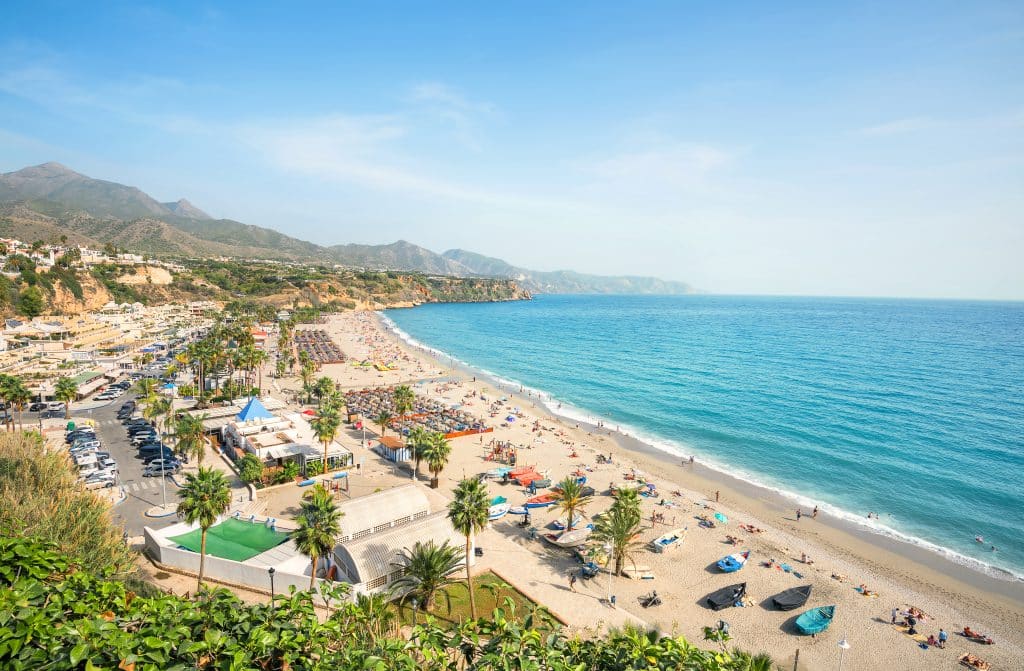
The Spanish Costas
Costa del Sol
True to its name (which means “Coast of the Sun”), Coasta del Sol is a region in southern Spain boasts over 300 days of sunshine a year. It’s a beach lover’s paradise, with long stretches of golden sand that seem to go on forever.
Marbella is the glitzy heart of the Costa del Sol, known for its luxury resorts, high-end boutiques, and celebrity sightings. But don’t worry if that’s not your scene – there are plenty of more laid-back spots like Nerja, with its lovely Burriana Beach and the impressive Balcón de Europa viewpoint.
The Costa del Sol is home to some of Europe’s best golf courses. So, if you fancy swinging a club between beach sessions, you’re in luck!
Costa Brava
For a completely different Spanish coastal experience, head north to the Costa Brava. This rugged stretch of coastline in Catalonia is characterized by dramatic cliffs, pine-fringed coves, and charming medieval towns.
One of the highlights here is the town of Tossa de Mar, with its impressive 12th-century walled Old Town overlooking a beautiful horseshoe-shaped beach. It’s like stepping back in time… but with modern amenities and fantastic seafood restaurants!
The Costa Brava is also home to some of Spain’s most beautiful hidden coves. Cala Macarella in Menorca, for instance, is a little slice of paradise with turquoise waters and white sand surrounded by limestone cliffs. It’s a bit of a trek to get there, but trust me, it’s TOTALLY worth it!
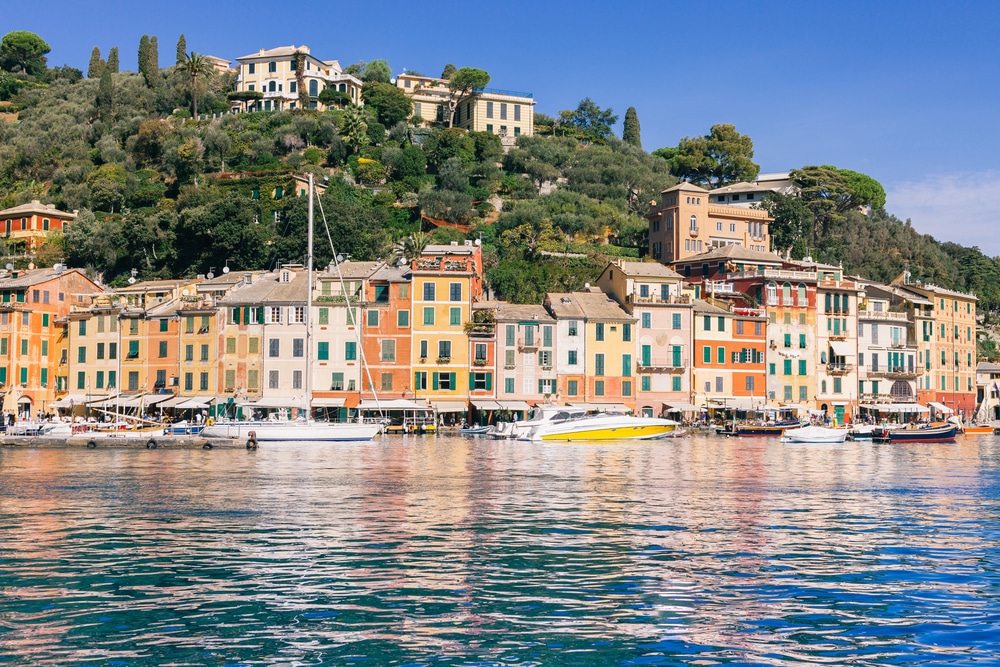
From Italian Dolce Far Niente to Spanish Fiesta
Italy (La Dolce Vita by the Sea)
One of the things that makes Italy’s coastline so special is the way of life – the famous “dolce far niente” or “sweet doing nothing.” There’s an art to lounging on the beach, sipping an Aperol Spritz, and watching the world go by.
Italian coastal towns come alive in the evenings with the passeggiata – the traditional evening stroll where locals dress up and socialize. It’s people-watching at its finest and a great way to immerse yourself in the local culture.
Coastal Italy is a seafood lover’s dream. From Ligurian anchovies to Sicilian swordfish, the variety is incredible. And there’s nothing quite like enjoying a plate of fresh pasta al frutti di mare while overlooking the sparkling Mediterranean.
Spain (Fiestas and Siestas)
Spanish coastal culture, on the other hand, is all about embracing life to the fullest. From afternoon siestas to late-night fiestas, there’s a rhythm to life here that’s hard to resist.
Beach life in Spain is wonderfully relaxed. It’s common to spend entire days at the beach, with families and friends gathering for long, leisurely lunches of paella and sangria. And when the sun goes down? That’s when the real party starts!
Many coastal towns in Spain host fantastic festivals throughout the year. The San Juan festival in June, for example, sees bonfires lit on beaches all along the coast to celebrate the summer solstice. It’s a magical experience that you won’t soon forget!
Natural Wonders
Italy’s Dramatic Coastlines
Italy’s coastline is nothing short of dramatic. From the towering cliffs of the Amalfi Coast to the volcanic landscapes of the Aeolian Islands, there’s a raw, untamed beauty here that’s truly awe-inspiring.
One of the most unique natural wonders along Italy’s coast is the Blue Grotto on the island of Capri. This sea cave is illuminated by an otherworldly blue light created by sunlight passing through an underwater cavity. It’s like something out of a fairy tale!
Another must-see is the Scala dei Turchi (Stair of the Turks) in Sicily. This striking white cliff face looks like a giant staircase leading into the turquoise sea. It’s an incredible sight and a popular spot for sunbathing (just be careful on those slippery rocks!).
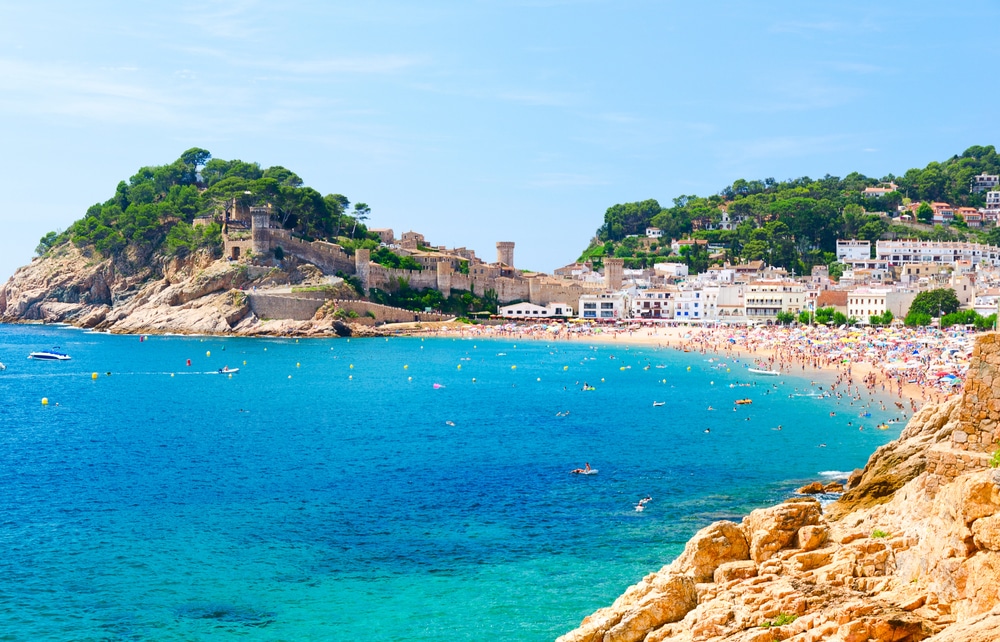
Spain’s Diverse Coastal Ecosystems
While equally beautiful, Spain’s coastline offers a different kind of natural wonder. The country is home to a diverse range of coastal ecosystems, from the wetlands of Doñana National Park to the volcanic landscapes of Lanzarote.
One of Spain’s most unique coastal features is the Playa de las Catedrales (Cathedral Beach) in Galicia. At low tide, you can walk among towering rock arches that resemble the flying buttresses of a gothic cathedral. It’s a truly surreal experience!
For nature lovers, the Cabo de Gata-Níjar Natural Park in Andalusia is a must-visit. This protected area features pristine beaches, rugged cliffs, and Europe’s only true desert landscape. It’s a haven for wildlife and offers some fantastic hiking opportunities.
Off-the-Beaten-Path Coastal Destinations
Italy’s Secret Spots
While places like the Amalfi Coast and Cinque Terre get all the attention, Italy has plenty of lesser-known coastal gems waiting to be discovered.
Take the Gargano Peninsula in Puglia, for example. This spur on the boot of Italy is home to pristine beaches, ancient forests, and charming fishing villages. The town of Vieste, with its whitewashed old town and beautiful beaches, is particularly worth a visit.
Or how about the island of Procida in the Bay of Naples? Often overshadowed by its more famous neighbors Capri and Ischia, Procida is a colorful, authentic slice of coastal Italian life. Its pastel-hued houses and laid-back vibe make it the perfect escape from the crowds.
For those looking to combine coastal charm with a taste of Italy’s iconic cities, consider taking the Naples to Rome train. This journey not only connects you to two of Italy’s most famous destinations but also offers stunning views of the Tyrrhenian coast along the way. It’s a great opportunity to experience both the bustling energy of Rome and the laid-back coastal vibe of Naples in one trip.
Spain’s Undiscovered Coasts
Spain, too, has its share of hidden coastal treasures. The Costa de la Luz in Andalusia, for instance, is often overlooked in favor of the more developed Costa del Sol. But with its long stretches of golden sand, charming white villages, and excellent windsurfing conditions, it’s a fantastic alternative for those seeking a more low-key beach experience.
For something truly off the beaten path, consider a visit to the Cíes Islands off the coast of Galicia. This small archipelago is home to what many consider to be the best beach in Spain – Rodas Beach. With its powder-white sand and crystal-clear waters, it’s easy to see why!
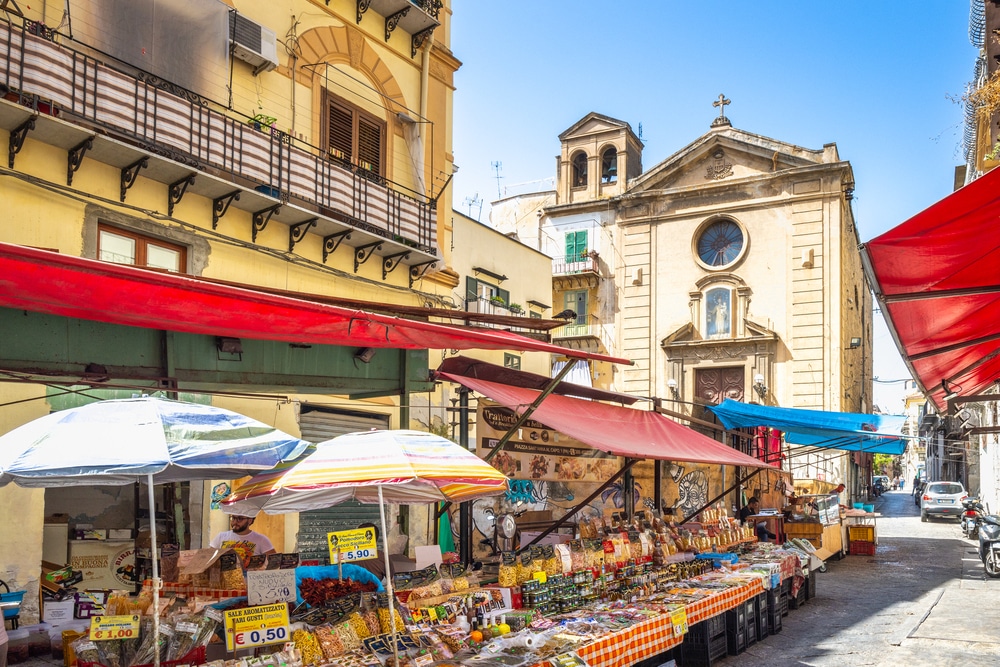
Coastal Cuisine
Italy’s Seafood Delights
No comparison of Italian and Spanish coasts would be complete without talking about the FOOD! Italian coastal cuisine is all about fresh, simple ingredients prepared with care.
In Liguria, you must try the local specialty – pesto alla Genovese. Made with basil grown on the sunny Ligurian hillsides, it’s unlike any pesto you’ve had before. Pair it with some locally caught fish for a true taste of the Italian Riviera.
Moving south to Sicily, don’t miss out on pasta alla Norma – a delicious combination of pasta, eggplant, tomatoes, and ricotta salata. And of course, no visit to the Italian coast is complete without indulging in some gelato!
Spain’s Coastal Flavors
Spanish coastal cuisine is equally delightful, with each region offering its own specialties. In Catalonia, you can’t miss trying some fideuà – a paella-like dish made with short noodles instead of rice.
The Basque Country in northern Spain is renowned for its pintxos – small, elaborate snacks often served on a slice of bread. Head to San Sebastian for some of the best pintxos bars in the country.
While traditionally from Valencia, you can find excellent paella all along the Spanish coast. Just remember, authentic paella is usually made with chicken and rabbit, not seafood (although seafood paella is delicious too!).
Two Coasts, Endless Possibilities
As we wrap up our journey along the stunning shores of Italy and Spain, one thing becomes clear – both countries offer incredible coastal experiences that are hard to beat. From the dramatic cliffs of the Amalfi Coast to the sun-soaked beaches of the Costa del Sol, from the colorful villages of Cinque Terre to the hidden coves of the Costa Brava, each destination has its own unique charm and appeal.
If you’re looking to explore beyond the coast, both countries offer excellent rail connections to their major cities. In Spain, the Madrid to Barcelona train is a popular route that allows you to combine the cosmopolitan capital with the beachside beauty of Barcelona. It’s a fantastic way to experience the diversity of Spanish culture, from the inland charm of Madrid to the coastal allure of Catalonia.
So, which country wins in this coastal showdown? Well, that’s like trying to choose between pizza and paella – it’s an impossible task! The truth is, both Italy and Spain offer such diverse and rewarding coastal experiences that the real winner is anyone lucky enough to visit either (or both!) of these Mediterranean paradises.



